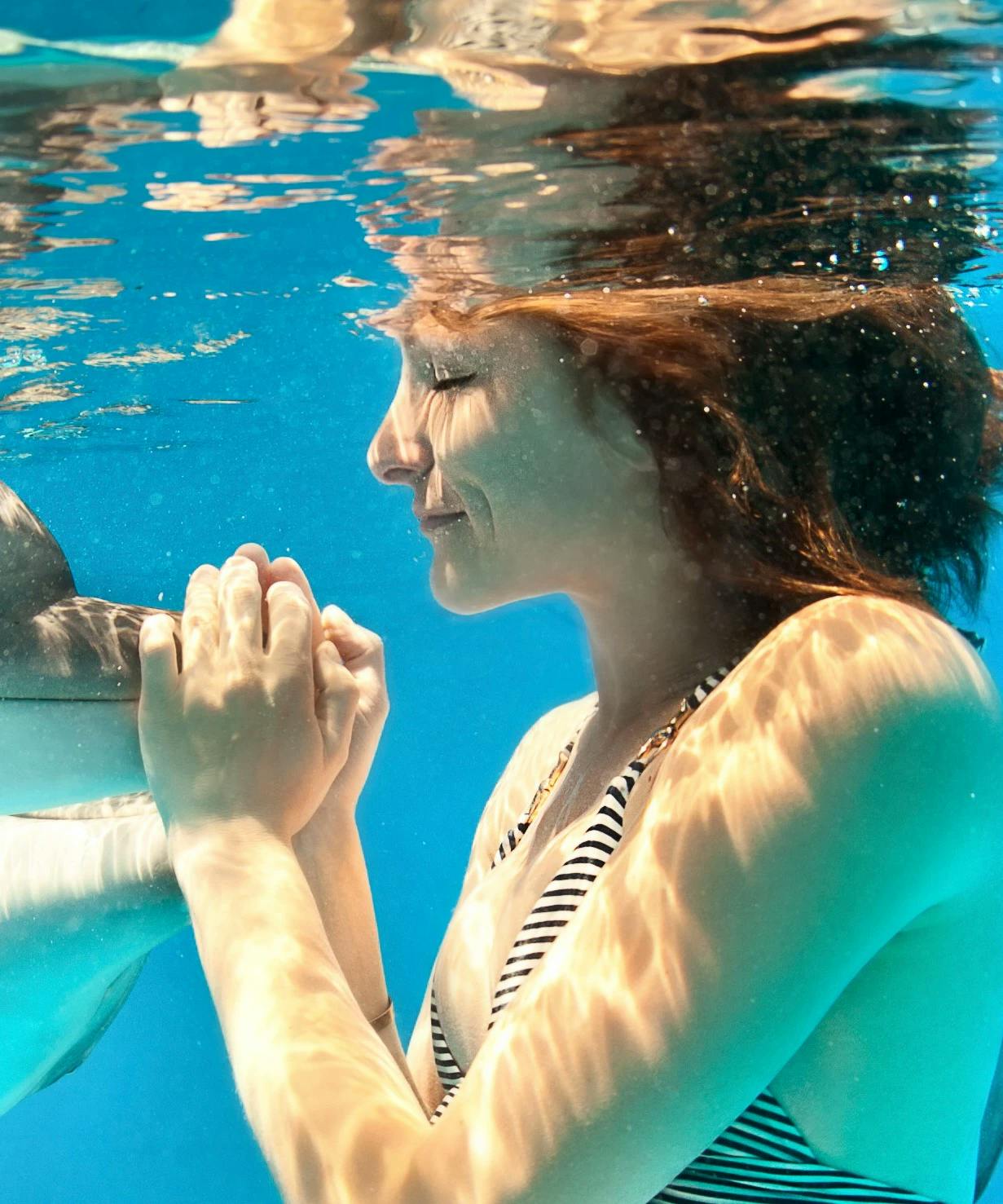Be Still My Heart: Dolphins Can Detect Babies In The Womb
Want a memorable pregnancy test? Go swimming with dolphins!

Dolphins can see babies in the womb using echolocation, similar to ultrasound technology. Both processes emit high-pitched pulses of sound (humans can’t hear it) and listen to the echoes that bounce back to create a visual image of objects in space.
While there hasn’t been enough research done to conclusively prove that dolphins can figure out that a woman is pregnant, there’s plenty of anecdotal evidence.
Female dolphins show a special interest in pregnant women. They swim up to the pregnant mom and make buzzing noises near her tummy.
Dolphins swim up to the pregnant mom and make buzzing noises near her tummy.
“‘Buzzing’ is a form of very concentrated echolocation. When the dolphins want to hone in on something or stimulate another dolphin, they put their snout against the skin and buzz,” said Lori Marino, a neuroscientist at Emory University who studies cetacean intelligence. "It sounds like a squeaky door."
And the baby in the womb can respond to the buzzing. Teresa Osbourne, who lived on Moreton Island, Australia and worked as a dolphin feeder at the Tangalooma Island Resort, experienced this with her first pregnancy. She was in the water for a feeding when six female dolphins swam up, formed a semi-circle around her, and began buzzing. Osbourne said her daughter responded by “circling” in her tummy.
Some scientists in Peru took the dolphin and unborn baby relationship even further. They said the “the squeals and squeaks of dolphins may stimulate the brain of an unborn child.”
Some aquariums (and hotels!) offer pregnant mother-dolphin encounters, as well as various kinds of dolphin therapy. There’s even a Russian midwife, Igor Tscharkofsy, who offers dolphin-assisted births in the Black Sea. Tscharkofsy’s assistant claimed the babies born in the ocean with the dolphins reached developmental milestones, such as walking and talking, six months ahead of other babies. (There are other proponents of dolphin-assisted birth around the world!)
While there’s not much scientific backing, the joyful experience of interacting with dolphins keeps people interested.
Closing Thoughts
So since bats use echolocation too, would they also be able to sense a baby in the womb? Not nearly as cute, but still intriguing!